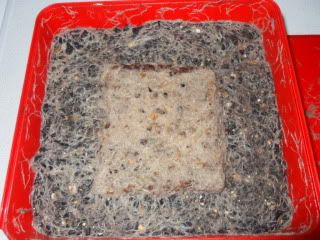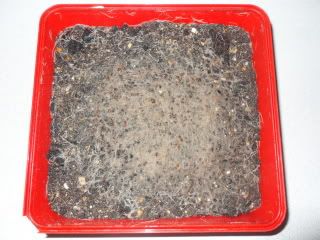Retirement and forum shutdown (17 Jan 2022)
Hi,
John Howell who has managed the forum for years is getting on and wishes to retire from the role of managing it.
Over the years, he has managed the forum through good days and bad days and he has always been fair.
He has managed to bring his passion for fish keeping to the forum and keep it going for so long.
I wish to thank John for his hard work in keeping the forum going.
With John wishing to "retire" from the role of managing the forum and the forum receiving very little traffic, I think we must agree that forum has come to a natural conclusion and it's time to put it to rest.
I am proposing that the forum be made read-only from March 2022 onwards and that no new users or content be created. The website is still registered for several more years, so the content will still be accessible but no new topics or replies will be allowed.
If there is interest from the ITFS or other fish keeping clubs, we may redirect traffic to them or to a Facebook group but will not actively manage it.
I'd like to thank everyone over the years who helped with forum, posted a reply, started a new topic, ask a question and helped a newbie in fish keeping. And thank you to the sponsors who helped us along the away. Hopefully it made the hobby stronger.
I'd especially like to thank John Howell and Valerie Rousseau for all of their contributions, without them the forum would have never been has successful.
Thank you
Darragh Sherwin
Culturing Whiteworms
- Puddlefish (Colin McCourt)
-
 Topic Author
Topic Author
- Offline
- Senior Member
-

- Posts: 347
- Thank you received: 10
Most aquarists, if not already done so, will one day want to culture some live-foods to feed to their beloved fish. Whiteworm are just one of a myriad of nematodes that can be cultured quite easily at home.
A small amount of time and devotion and attention to detail will reward you with many sub-cultures for your fish larder.
1) Fully soak your bread, I like to use Hovis Granary, I find it's the best for my purposes.
2) Lay your saturated bread onto your worm culture.
3) Now let them tuck in.
4) Jeez..at this rate I'm gonna need another loaf
Temp
The optimum temperature for reproduction is 15° - 21° C. Below 9°C the worms will stop breeding and above 27°C they will die.
Breeding
For breeding you will need the following:
• A Container; e.g. an ice-cream tub or similar with holes punched in the lid. Pinholes will suffice so as not to attract fly infestation.
• Medium; Potting Compost; I make my own with a little garden lime added, as worms do not like acid soil. Aquatic soil is also a good medium.
• Food; To begin with I use granary bread cut into 1” squares and soaked in milk. when the Culture matures I then use full slices of Brown Granary Bread fully soaked in RO water, this method has presented me with my best results in terms of yield thus far.
Place your compost in your container to about three inches deep and gently firm. Spray this until it is nice and damp, but not soaking wet. Empty your starter into a depression in the centre of the container. Gently level this and add a square of bread to begin with. Cover this with a piece of glass or slate (the later works best). Cover the box as white worm’s don’t like light.
The worms will begin to slowly disperse into your culture box. To begin with the worms will eat very little and you may find that the food will grow a white hairy fungus. If this is the case carefully remove the uneaten food, taking care not to remove the worms that are attached to the base of the rotting food. Replace with fresh food. Check the culture every day to ensure that they have enough food. You will find that as the worms multiply, the food will be consumed more quickly.
You can increase the number of cultures by adding some worm filled media from your new culture once it is established (as you did to start your first culture), or upsize to a larger container.
Your culture should be ready to harvest in about 8 - 12 weeks.
Harvesting
A common fault is that people attempt to harvest too early. It usually takes at least 8 weeks for the worms to be collected in numbers large enough to both feed fish and sustain the culture.
To collect the white worm place them in a plastic tub containing a small amount of water for around 5 minutes (this is long enough for the worms to purge themselves of any compost), by this time they will have collected together in small balls and are easy to collect and feed to fish.
I hope this small article of another easy to culture livefood encourages some folks to give it a go.
Regards
C
Please Log in to join the conversation.
- Sofiztikated (Kenny Gibson)
- Offline
- Junior Member
-

- Posts: 61
- Thank you received: 0
Where did you originally get the worm culture from?
These whiteworms, what are the chances of them escaping through the pin holes in the lid? I've had, in the past, some issues with live food escapees, and in one incidence, an infestation of mites, which I'm still not hearing the last about.
Roughly, what size are the worms when they are ready to be used?
Do you use these for any particular fish, or just as food in general?
(Sorry for all the questions, I'm feeling inquisitive today.)
Please Log in to join the conversation.
- Puddlefish (Colin McCourt)
-
 Topic Author
Topic Author
- Offline
- Senior Member
-

- Posts: 347
- Thank you received: 10
My original culture was provided once again by Donald who always seems to have the things I need as and when I need them
No escapees if your holes are small enough
The Worms generally can be anything from around 10mm up to perhaps 40mm this existing culture seems to provide fairly large specimens.
I use them for my Killifish but they can be utilised for any tropical fish species large enough to consume them.
Don't (as with any fish food) make them the sole order of the day but give your fish a widely diverse and varied diet as much as possible.
Regards
C
Please Log in to join the conversation.
- Sofiztikated (Kenny Gibson)
- Offline
- Junior Member
-

- Posts: 61
- Thank you received: 0
Forgive my ignorance, but do these "turn" into anything else? I mean, are they a larvae stage of anything, do are they worms and only worms?
Please Log in to join the conversation.
- Acara (Dave Walters)
- Offline
- Moderator
-

- Posts: 1048
- Thank you received: 28
Sofiztikated,they are not larvae,full life as worms.
always on the lookout for interesting corys.pm me if you know off any!
Please Log in to join the conversation.
- Sofiztikated (Kenny Gibson)
- Offline
- Junior Member
-

- Posts: 61
- Thank you received: 0
That might make introducing them to the Mrs a bit easier, when I get the Clearseal set up in the new house.
Very intresting reading.
Please Log in to join the conversation.
- JohnH (John)
-

- Offline
- Administrator
-

- Posts: 6067
- Thank you received: 857
I used to have no problems with mites on my worm cultures, but since coming to Ireland every culture I have tried has always had to be abandoned.
I have tried air-tight containers with the lid pin-pricked so I can't for the life of me know where they are coming from...ah, I just had a thought, perhaps the eggs/larvae are already in the soil I'm using.
Next time I shall microwave the soil for a while at full power, that should deal with them!
John
Location:
N. Tipp
We're just two lost souls swimming in a fish bowl - year after year.
ITFS member.
It's a long way to Tipperary.
Please Log in to join the conversation.
- platty252 (Darren Dalton)
-

- Offline
- Moderator
-

- Posts: 2309
- Thank you received: 127
John if nukeing dosent solve the problem try using a fine nylon stocking over the culture.
Please Log in to join the conversation.
- JohnH (John)
-

- Offline
- Administrator
-

- Posts: 6067
- Thank you received: 857
I'm concerned that perhaps they are coming in with the soil/worms.
I've read that a good way to deal with them is to use a miniflame torch and sear them into oblivion...but this wouldn't really be possible with plastic boxes...
I'm remembering now that all my successful White and Grindal Worm cultures before were in open topped boxes merely covered with a sheet of glass over the food - so then there was never the humid warm perfect breeding ground for the mites.
Your suggestion would be a great compromise. Thanks,
John
Location:
N. Tipp
We're just two lost souls swimming in a fish bowl - year after year.
ITFS member.
It's a long way to Tipperary.
Please Log in to join the conversation.
- sheag35 (Seamus Gillespie)
-

- Offline
- Platinum Member
-

- 086 8442267
- Posts: 2740
- Thank you received: 274
Fishkeeping the Only way to get wet and wild
currently 25 tanks, and breeding is the aim of everything i keep
location:Limerick
Please Log in to join the conversation.
- Puddlefish (Colin McCourt)
-
 Topic Author
Topic Author
- Offline
- Senior Member
-

- Posts: 347
- Thank you received: 10
My preferred medium of choice nowadays is Aqua Soil available from your LFS. This is a more course grade of soil with fine pieces of gravel which in essence would keep the soil "open" and not as compact. Also its not acidic. I also keep this fairly damp so as the worms dont need to exercise too much effort to get around.
Also adhere to the temperature data in the original post. Wooden boxes with sliding lids (old pencil case design if you like) were the order of the day when I was a lad
Regards
C
Please Log in to join the conversation.





